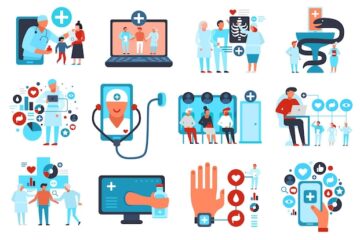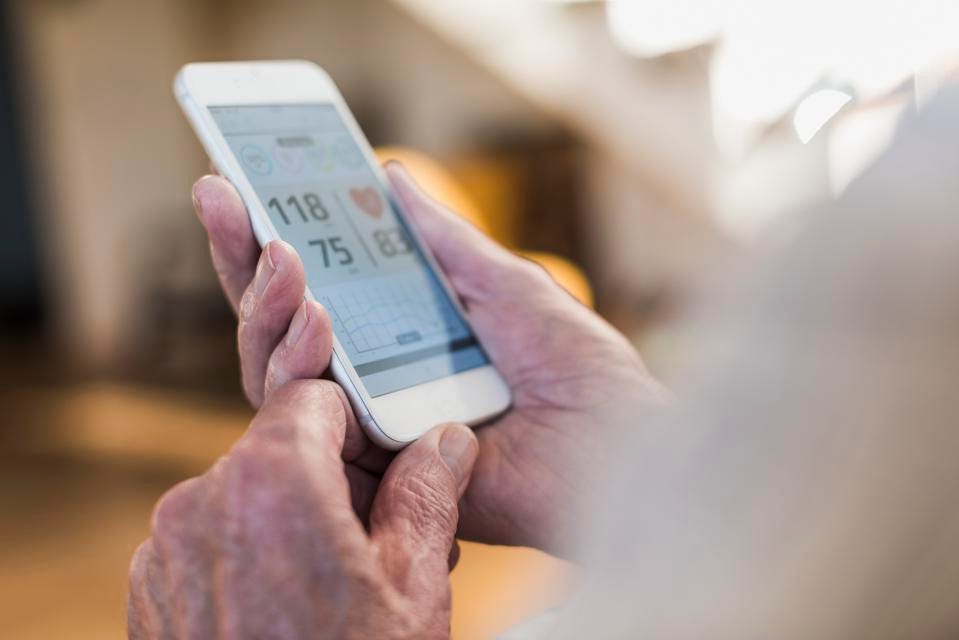
In the United States, around half of all adults have at least one chronic health condition, such as heart disease, stroke, cancer, type 2 diabetes, obesity, or arthritis. Treatment for these conditions accounts for as much as 86 percent of national healthcare spending.
Cue digital health technology, which includes remote monitoring, mobile health (mHealth) apps, and wearables, such as activity trackers. There are myriad options on the market, but are any of these particularly beneficial for use by the healthcare professional?
Medical News Today asked primary care and internal medicine specialists how they use digital health technology in their daily practice and about their views on its potential for revolutionizing chronic disease management.
While they acknowledged that new technology has great potential to provide high-quality care, they did not hesitate to emphasize the barriers that prevent its widespread uptake by clinicians and patients.
Contents
Remote monitoring: An early success?
Wireless remote monitoring of patients’ vital signs and symptoms was generally perceived as an attractive option by primary care providers (PCPs).
This type of monitoring can help with early intervention when specific symptoms are detected. It also allows the patient to be actively involved and engaged in the monitoring process.
One of the most successful digital tools currently in use is for managing heart failure, noted Suzanne Falck M.D., associate professor of internal medicine at the University of Illinois College of Medicine.
In these cases, data from an implanted sensor are directly transmitted to a healthcare professional, who can then use these data to advise about medication, lifestyle, additional clinic visits, or recommendations to visit their PCP or the emergency room.
Clinical trials have shown that remote monitoring is particularly effective in reducing hospitalizations in patients with cardiovascular implantable electronic devices, such as implantable cardioverter-defibrillators or cardiac resynchronization therapy with a defibrillator or pacemaker. It has also been shown to be more cost-effective than conventional management.
Medical apps increasing in popularity
As 77 percent of all U.S. adults own smartphones and around half own tablet computers, “mobile technology has the potential to make a huge impact on the management of chronic disease,” Judith Marcin M.D., a family practice specialist in Chicago, told MNT. Patient-facing health apps “can be an excellent way to empower people to take a more active role in their own healthcare,” she added.
There are currently around 259,000 mHealth apps available in app stores. Of these, approximately 56 percent are aimed at consumers with chronic conditions, particularly diabetes, hypertension, chronic heart disease, and depression.
Diabetes is viewed by both PCPs and app developers as the therapy field that offers most potential for mHealth apps. In clinical trials, patients with type 2 diabetes who used an app to monitor blood glucose showed a greater reduction in HbA1c than those who did not use an app, with the biggest benefit seen in younger patients.
While few patients receive sufficient support to self-manage their diabetes at present, a recent article in Diabetes Technology & Therapeutics notes that apps have the potential to give patients the ability to better manage their condition, improve their disease trajectory, lower rates of complications, and prevent comorbidities.
Wearable trackers: Endless potential or passing fad?
Some of the most exciting developments in digital health are wearable technology and devices, according to Dr. Marcin.
“Wearable devices are currently being studied in a wide variety of settings. On the horizon are portable cardiac monitors, EKGs [electrocardiograms], sleep cycle analyzers, and glucose monitors,” Dr. Marcin explained. “The potential of this technology is endless. These tools will vastly improve access to care in any setting, as well as [facilitate] increased convenience and likely compliance to certain diagnostic tests.”
“Wearable technology can provide real-time results to a healthcare provider anywhere in the world. This expands the services people can receive along with immediate expert input. Wearable technology will, without a doubt, change the way we approach chronic disease and treatment.”
Judith Marcin, M.D.
Wearable activity trackers such as FitBits have become very popular, although their role in illness and recovery is not yet clear. A 2016 survey put usage at 23 percent in the U.S., 19 percent in Australia, and 15 percent in the United Kingdom.
However, the drop rate is huge; as many as 30 percent of users reported abandoning their activity trackers because they did not find them useful, they grew bored of them, or the tracker broke. These devices may not be sufficient to change health-related outcomes alone or with only minimal behavioral change support.
One recent study, called TRIPPA, showed that wearing an activity tracker increased physical activity, but did not produce improvements in blood pressure or weight. In another study, called IDEA, participants who wore a multisensor activity tracker in addition to undergoing a standard behavioral intervention actually lost less weight over 24 months than the participants who received the standard intervention alone.
Concerns about barriers to access
All the physicians contacted by MNT expressed concern about lack of access to technology among the underserved populations, particularly low-income families. “Those individuals that are in most need of these services are often the least likely to have the resources necessary to take full advantage of these programs,” commented Dr. Marcin.
Adults aged 65 years and older – who are most likely to have two or more chronic conditions – are another group being poorly served by digital health. A recent study led by David M. Levine, M.D. – practicing PCP and primary care researcher at Brigham and Women’s Hospital and Harvard Medical School, both in Boston, MA – showed that in the U.S., only around a fifth of older adults have tablets in their home, and only around 40 percent are using email and the Internet.
Seniors’ use of digital health was low and barely increased between 2011 and 2014, Dr. Levine told MNT. Black or Latino seniors were only around half as likely to be using digital health as white seniors.
Dr. Levine pointed out that language can be another barrier to using digital health technology. “About 80 percent of my patients speak Spanish, which adds yet another layer of difficulty, because most digital health applications are first created and presented for English speakers,” he said.
Framing change: A gentle approach to digital health
“New technology must be easy to understand, easy to use, and easy to learn,” Dr. Marcin stressed. “If it is too frustrating or cumbersome, neither providers nor patients will be eager to adopt it. Setting reasonable expectations for how a new technology will work is also important. New devices or programs often slow down a busy practice, so it is essential that this is communicated to both patients and staff,” she advised further.
“Notifying people of increased wait times and highlighting the potential temporary changes to the routine is very important when asking anyone to embrace new technology. Framing change as a way to make patient care better can help instill confidence when adding in technology to improve upon long-term healthcare goals.”
Judith Marcin, M.D.
When asked about adopting new technology into their practice, one internal medicine specialist explained to MNT that it should be used “only if it doesn’t interfere with patient contact and doesn’t add more work. It should improve work-flow and give more time to the patient and physician interaction.”
[Source:-MNT]




